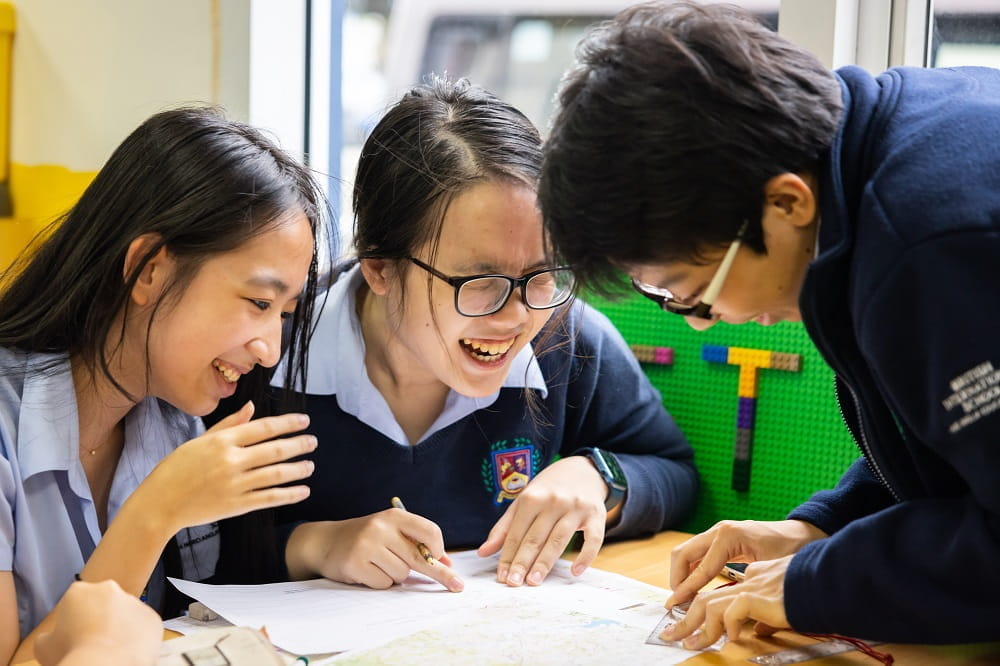The workshop was partly informed by a survey we conducted among our own students from Year 3 to Year 6, which resulted in the following learnings:
- 50% of students own a smartphone
- 78% own a laptop
- 40% own a games console
- 85% watch YouTube
- 30% use TikTok or Discord
- 15% use Instagram and Facebook
- 8% do not use social media
- 45% spend 1-2 hours a day on devices outside of school
- 20% spend 3-4 hours on devices a day
- 40% have seen something upsetting online
- 10% would not tell an adult if they saw something upsetting online
- 50% have discussed online safety with parents
- 70% think online safety is taught well at school
- 20% have sent or said something online that they later regretted
- 20% worry about online bullying
- 68% use devices at home because they are bored
- 27% use devices because they are lonely

Social media use among Primary students
In the workshop, we discussed the fact that students in Year 5 and Year 6 have unprecedented online access because they have their own devices. This means we need to be aware of the various forms of social media, including YouTube. We shared the following information about social media use amongst children:
- Discord is the most popular social media platform and is used extensively by children to communicate - particularly by those who enjoy gaming.
- The minimum age to use Facebook and Instagram is 13 years, so none of our Primary students should have Facebook or Instagram accounts.
- The maximum amount of time a 10-year-old should be using social media each day is 2 hours.
- Worldwide, only 50% of parents set parental controls on their children’s social media accounts.
Understanding a child’s ‘Digital Footprint’
As part of the workshop, we also discussed how students can create and maintain their ‘Digital Footprint’. Our Digital Footprints stay with us forever because everything we post online stays with us forever.
This is important to understand because our Digital Footprints reflect who we are as people. Our footprints can be cyber-vetted in the future by companies who are considering hiring us, or by universities enrolling students. An online presence is expected - and a positive Digital Footprint can increase the chances of getting hired or accepted into universities. However, a negative digital footprint could result in rejection.

The role of the school and parents in ensuring online safety
At the workshop, we were pleased to share details of the school’s online safety programme for Primary students, ‘Be Internet Awesome’. It is a child-centred programme that teaches children to be:
Smart - to share with care
Alert - how to identify fake information
Strong - how to set strong passwords
Kind - how to develop a positive digital footprint by being kind online
Brave - how to report and block things we see online which are inappropriate
We also introduced parents to Interland - an online platform from Google that uses games to reinforce the messages in our ‘Be Internet Awesome’ programme.
Finally, we looked at setting parental controls. We learned how to set YouTube restrictions using YouTube Kids and YouTube Restricted Mode. This limits what children can access to prevent them from viewing harmful content. We also learned how to set Google SafeSearch to control and track what children are searching for.
There are also a variety of affordable and effective parental control apps to choose from. These are excellent tools which help protect children and provide parents with peace of mind. One highly rated tool is Qustodio. It is available here in Vietnam for a small fee - and there are numerous videos available on YouTube to assist parents with installing the app on different devices. You can visit www.qustodio.com to learn more about this excellent parental controls app.
Both the school and parents have a role to play in empowering children to navigate the online world safely and with confidence. Together we can keep our students safe online by educating them, equipping them with the right skills, regularly monitoring device use, and by using parental controls.
Stephen Labelle
Primary Computing & STEAM Teacher





.jpg?h=666&iar=0&w=1000&rev=706cec942d464afe9122dbdc59c6f535&hash=4C350A465FC8E231ECA58721E30DE74E)
